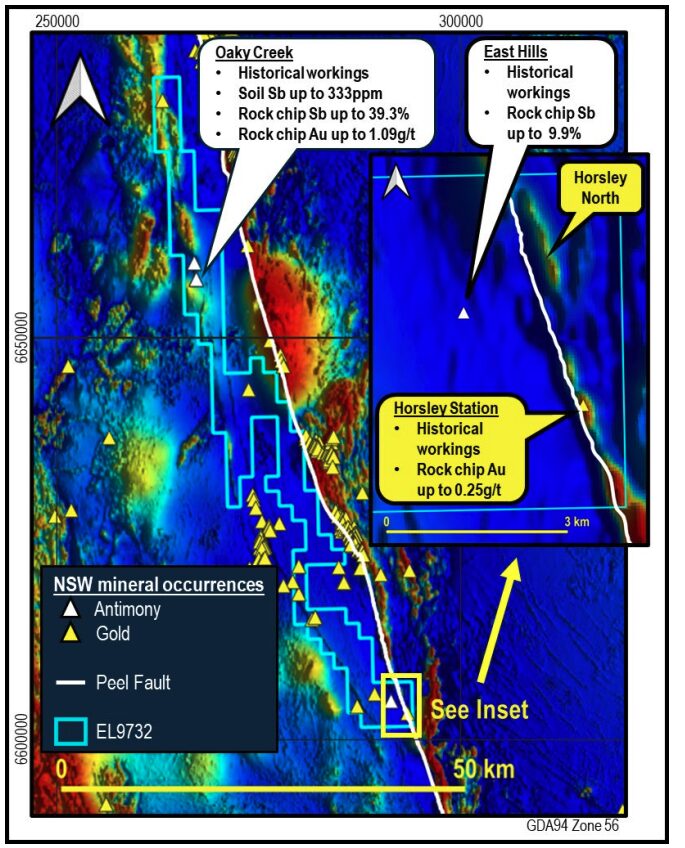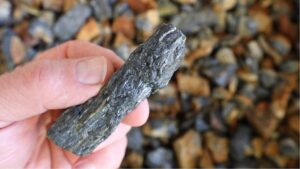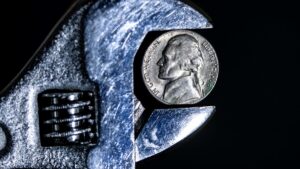Red Mountain frames a compelling antimony-gold picture at Armidale

Red Mountain uncovers multi-prospect antimony potential in picturesque Armidale. Pic: Getty Images
- Sampling returned up to 36.3% antimony at Oaky Creek North and 23% antimony with 0.36g/t gold at Oaky Creek South
- Antimony-gold correlation at Oaky Creek supports model analogous to Australia’s largest antimony deposit, Larvotto Resources’ Hillgrove
- Further soil and rock chip sampling planned to define prospective drill targets
Special Report: Rock chip sampling has indicated that antimony and gold mineralisation is present in multiple locations across Red Mountain’s Armidale project in the southern New England Orogen of NSW.
Sampling of outcrops at the Oaky Creek prospect in the northern part of the tenement returned up to 36.3% antimony at Oaky Creek North and 23% antimony with 0.36g/t gold at Oaky Creek South.
Meanwhile, initial sampling at the previously untested East Hills prospect to the south returned a top assay of 9.9% antimony, while sampling at Horsley Station recorded up to 0.25g/t gold.
Of particular interest to Red Mountain Mining (ASX:RMX) is the strong spatial correlation between antimony and gold, which supports its exploration model for the Oaky Creek prospect.
The company believes that Oaky Creek is a vein-style orogenic antimony-gold deposit, analogous to Larvotto Resources’ (ASX:LRV) Hillgrove project – Australia’s largest antimony deposit – which sits about 85km to the east.
It adds that the evidence of antimony and gold mineralisation from multiple prospects across the length of the project highlights the strong potential of the tenement to host multiple orogenic antimony-gold systems associated with the Peel Fault system and its related splays.
That the Southern New England Orogen is also known for its antimony bounty certainly doesn’t hurt.
Securing supplies of antimony, which is critical for armament manufactures, has become increasingly important amid export bans from primary supplier, China, which have sent prices soaring towards US$60,000 per tonne.

Rock chip sampling
The sampling at Oaky Creek North and Oaky Creek South was undertaken during the collection of ~250 hand auger soil samples, spaced at 10m and 20m intervals across the Oaky Creek South prospect to follow up on antimony soil anomalies defined by initial wide-spaced sampling.
Eight new samples were collected from both the immediate surroundings of the historical workings and from the antimony-bearing creek exposure ~500m north-northwest of the workings at Oaky Creek North.
Five of the samples returned >1% antimony with a top value of 36.3% – the highest antimony result recorded to date for Oaky Creek North.
Over at Oaky Creek South, a sample of weathered outcrop or subcrop collected ~500m from historical workings that returned 23% antimony and 0.36g/t gold.
This is within 6m of two float samples reported earlier this month to contain 39.3% antimony and 0.16g/t gold, as well as 33.5% antimony and 1.09g/t gold respectively.
The close proximity of in situ mineralisation to the mineralised float samples supports RMX’s previous interpretation that the float was collected close to source.
Sampling has also confirmed that antimony mineralisation is present at the East Hills prospect in the southern portion of EL9732.
Besides the top grading sample that returned 9.9% antimony, two additional samples with anomalous antimony were collected about 70m north-northwest along strike, indicating that mineralisation at East Hills extends well beyond the small historical workings.
Meanwhile, the results at Horsley Station and Horsley North support the company’s interpretation that magnetic highs at the two prospects represent structurally bound ultramafic bodies.
Looking forward
Subject to positive results from soil sampling at Oaky Creek South, RMX will undertake a similar program of soil and rock chip sampling over the Oaky Creek North soil anomaly to define prospective drill targets.
The company also expects to carry out further work at East Hills to follow up on the initial positive antimony rock chip results, with next steps to be finalised following receipt and interpretation of the soil sampling results.
Further soil and rock sampling is planned for Horsley Station and Horsley North gold targets where land access has now been secured.
Additionally, the company is looking to secure access to ground truth stibnite and jarosite spectral anomalies across EL9732, with particular interest in anomalies close to known mineralisation and/or along the known major Peel, Namoi and Cobbadah faults.
In parallel, RMX is looking to also leverage the US’ thirst for antimony with the start of exploration imminent at its Utah project. Company management also says it will continue to assess new critical mineral asset opportunities in the US.
This article was developed in collaboration with Red Mountain Mining, a Stockhead advertiser at the time of publishing.
This article does not constitute financial product advice. You should consider obtaining independent advice before making any financial decisions.
Related Topics

UNLOCK INSIGHTS
Discover the untold stories of emerging ASX stocks.
Daily news and expert analysis, it's free to subscribe.
By proceeding, you confirm you understand that we handle personal information in accordance with our Privacy Policy.








